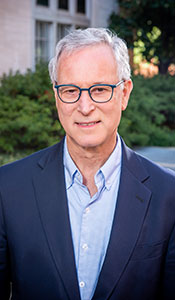As I discussed in last month’s blog, the UAB NF Clinic staff is making the necessary adjustments to accommodate all patients after Dr. Lane Rutledge’s unexpected passing at the beginning of the year. Our nurse practitioner, Ms. Tammi Skelton, who works with me in the NF Clinic and had also worked with Dr. Rutledge in clinic, is assisting Dr. Rutledge’s former patients with immediate needs in scheduling appointments with me as needed. Also, we have plans to open an extra clinic session once a week with the help of pediatric neuro-oncologist Katie Metrock, M.D. With all of us working together, we can continue providing the same high level of care to all of Dr. Rutledge’s former patients in the NF Clinic. We are also working with the adult neuro-oncology service to integrate experts in this area into the care of adults with NF.
Differences in Schwannomas and Neurofibromas
Because we frequently receive questions about the difference between neurofibromas and schwannomas, I’d like to explain the distinctions between these types of tumors. Both neurofibromas and schwannomas are tumors of the peripheral nerve sheath, and the primary tumor cell in both is the Schwann cell. There is, however, a difference in how the cells that comprise schwannomas and neurofibromas behave. In schwannomas, the Schwann cells grow as a mass that pushes the nerve aside and may compress the nerve. Also, the majority of cells in the schwannoma are Schwann cells. In contrast, neurofibromas include a variety of cell types, including Schwann cells, but also others, such as specific types of blood cells, connective tissue cells, and other cells from the nerve sheath. Neurofibromas usually consist of a loose mixture of these various cell types surrounding the nerve, but not displacing it. They can compress the nerve, particularly if there is a nearby rigid structure, such as a bone. These distinctions are mainly visible to the pathologist, who would examine a sample of a tumor through the microscope.
Neurofibromas can sometimes be distinguished from schwannomas by their imaging characteristics, but this distinction is more difficult and sometimes not possible to do definitively. Because of this, some people have been told that they have either neurofibromas or schwannomas based on imaging, but in fact the tumor has been mis-identified. The distinction is important, however, in terms of both underlying diagnosis and treatment. Neurofibromas are characteristic of NF1, whereas schwannomas are typically seen in NF2 and schwannomatosis. There is some scientific debate as to whether neurofibromas are ever seen in NF2 or schwannomas in NF1. Whatever the answer, it is a good rule of thumb that neurofibromas go with NF1 and schwannomas with NF2. Usually, if a person with NF1 is told he or she has a schwannoma, or a person with NF2 is told he or she has a neurofibroma, it will turn out that the terminology of the two tumors was used incorrectly. We have also heard from some people that they were told that they have both NF1 and NF2. Although theoretically possible based on having two independent genetic mutations, this would be extraordinarily rare; an error in diagnosis is much more common.
It should be remembered, however, that it is possible for a person with NF1 to develop a vestibular schwannoma that is also a hallmark feature of NF2, on one or both hearing nerves. Vestibular schwannomas are relatively common in the general population, and individuals with NF1 can coincidentally develop vestibular schwannomas without having NF2. Vestibular schwannomas in the general population usually occur later in life than they do in NF2, so the sporadic vestibular tumors in rare individuals with NF1 usually happen later in life as well.
The distinction between NF1, NF2, and schwannomatosis is important to establish for clinical follow-up. The surveillance and treatment guidelines are quite different for the three conditions. That is why, when we see a new patient, we try to review a comprehensive picture, including medical history, review of any pathology and genetic testing, physical exam, and family history. This facilitates correct diagnosis and provides guidance for further management.
